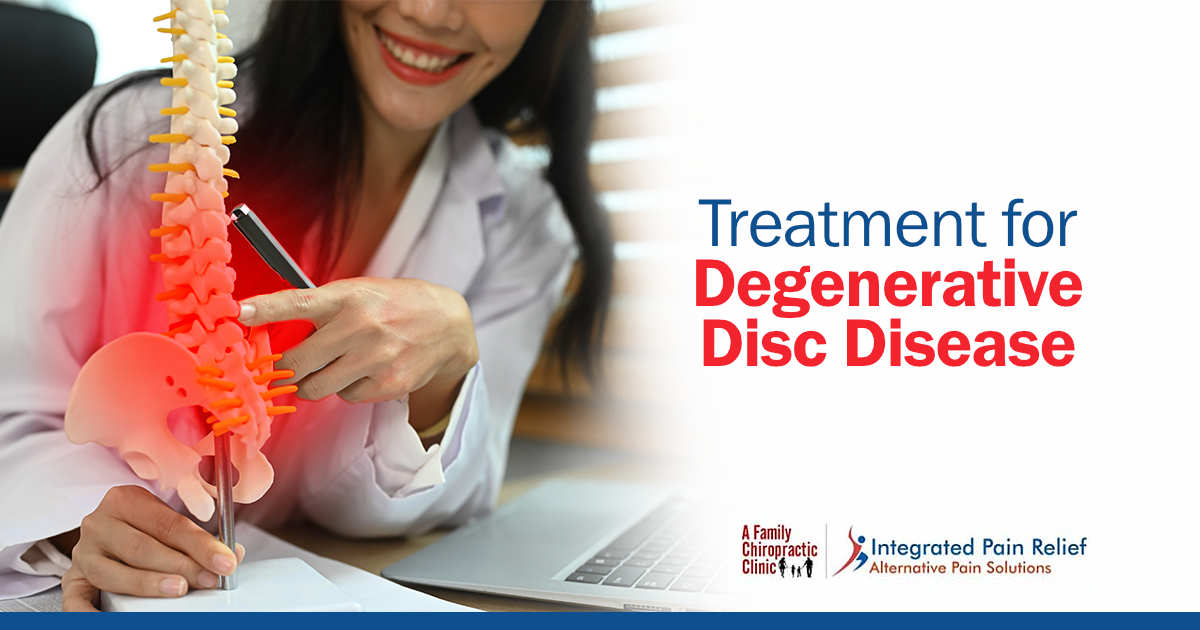Anyone who has suffered or who is suffering from back pain will tell you that it can be extremely painful to the point that it leaves you down for the count. Many back ailments are much more complex than just a backache that can be treated with some over-the-counter pain medication. Degenerative disc disease is one of those illnesses that pose more serious problems. It can cause extreme pain but can be treated with the right course of action. If you are diagnosed with it your doctor will advise you about the various options for the treatment for degenerative disc disease.
Before we talk about the treatments for degenerative disc disease, let’s first take a look at what it is, what causes it and what the symptoms are.
What is degenerative disc disease?
One of the first things to understand about degenerative disc disease is that it isn’t an actual disease; rather it is a condition that involves the discs in the back. When a disc in your back becomes damaged, it begins to cause pain. This is what degenerative disc disease consists of. Those that suffer from this condition typically have low-level chronic pain with unpredictable episodes of more severe pain.
The name comes from the fact that over time the discs will deteriorate in their condition. Degenerative disc disease is most common in the neck and lower back since these are the areas that are most used in many movements and are susceptible to injury.
What causes degenerative disc disease?
Like many ailments affecting the back, there are a number of causes of degenerative disc disease. The pain many people feel when they suffer from degenerative disc disease is caused by the disc affecting other parts of the body including the muscles, joints, or nerves.
Inflammation can lead to degenerative disc disease. As the disc degenerates, inflammatory proteins can leak out, leading to inflammation and swelling around the spine. Anyone with degenerative disc disease can tell you that the condition is just as painful as it sounds.
The inflammation associated with degenerative disc disease can happen as we age. As we get older, the discs in our back dry out and can’t absorb shock as well as they used to. Daily wear and tear, as well as sporting activities, can also lead to degenerative disc disease. Any type of back injury can also lead to swelling and soreness.
What are the symptoms of degenerative disc disease?
There are many different symptoms of degenerative disc disease that may mimic other conditions. If you notice any of the following symptoms, it’s a good idea to call your doctor.
- Increase pain while sitting. When you sit you are putting more pressure on the discs in your back compared to when you are standing.
- Numbness or tingling in your arms or legs
- Pain that gets worse as you lift, twist or bend
- Periods of severe pain that come and go
- Weakness in leg muscles
When you contact your doctor about these symptoms he or she will likely do a physical exam. During the exam, the doctor will take note of your posture and how well you can move. He or she will also examine your spine and look for any curves or alignment issues.
From there he will probably test your reflexes, muscle strength or other nerve changes. In order to confirm a degenerative disc disease diagnosis, you may also have to have an X-ray or an MRI. This will allow your doctor to see how the bones inside of your neck and spine are behaving.
When the doctor puts the pieces of the physical exam, neurological exam, as well as the imaging together, he or she can get a clearer picture of what is exactly going on in your back and prescribe treatment for degenerative disc disease if necessary.
Treatment for Degenerative Disc Disease
Once you are diagnosed with degenerative disc disease you’re going to want to ease the pain as quickly as possible. Doctors will aim to treat the chronic pain as well as eliminate any flare-ups. In order to decrease pain, doctors may recommend:
Ice therapy. Applying ice or cold compresses to a painful area can decrease inflammation and pain.
Heat therapy. If muscles are affected heat therapy can relax them and help to reduce muscle spasms.
Pain medications. Over-the-counter pain medications may be recommended. When those are tried but don’t work, a doctor may prescribe prescription pain medicine.
Exercise and physical therapy. Stretching and strengthening exercises can relieve back pain associated with degenerative disc disease. A licensed physical therapist can devise an exercise plan for you that will get you moving the right way so that you don’t further injure yourself.
Chiropractic care. A natural way to relieve the pain is through chiropractic care. A licensed and experienced chiropractor can help to relieve muscle tension and remove pain from the root. This type of therapy is an excellent treatment for degenerative disc disease because it can not only ease the pain but also improve mobility.
Many doctors will opt for therapy or chiropractic care over surgery since surgery involving the back can pose many potential problems.

